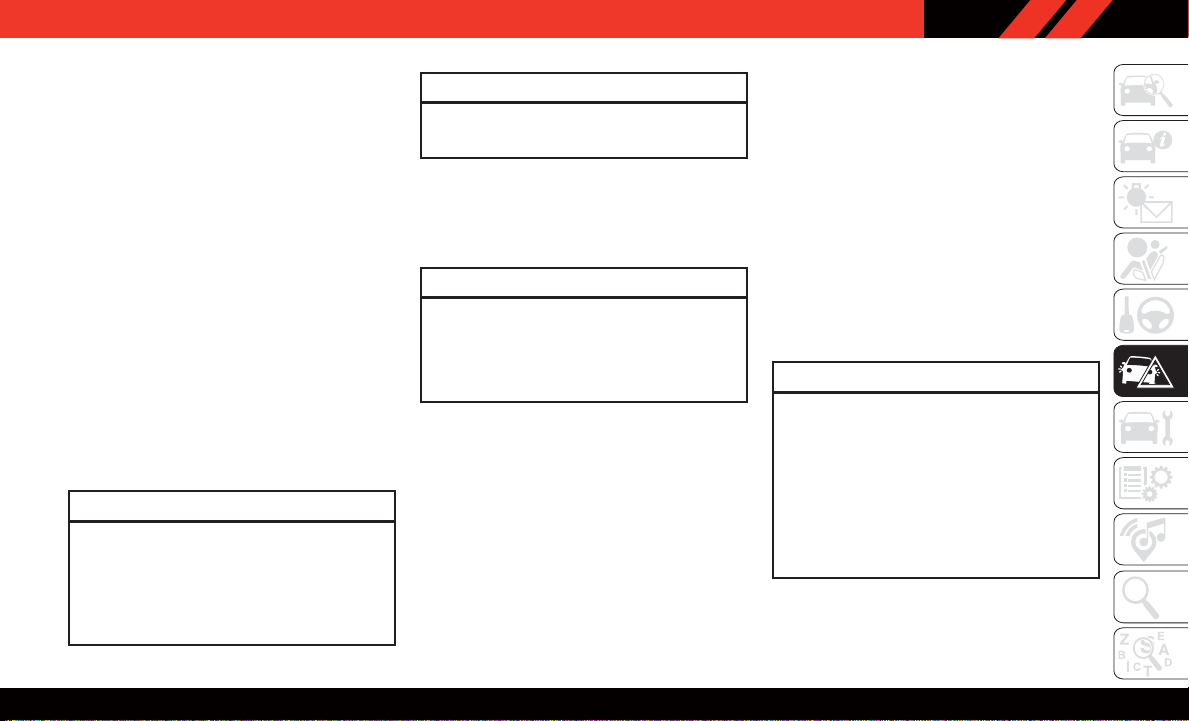Loading ...
Loading ...
Loading ...

NOTE:
Make sure at all times that unused ends of
jumper cables are not contacting each other or
either vehicle while making connections.
Connecting The Jumper Cables
1. Connect the positive (+) end of the jumper
cable to the remote positive (+) post of the
discharged vehicle.
2. Connect the opposite end of the positive (+)
jumper cable to the positive (+) post of the
booster battery.
3. Connect the negative end (-) of the jumper
cable to the negative (-) post of the booster
battery.
4. Connect the opposite end of the negative (-)
jumper cable to the remote negative (-) post
of the vehicle with the discharged battery.
WARNING!
Do not connect the jumper cable to the
negative (-) post of the discharged battery .
The resulting electrical spark could cause the
battery to explode and could result in per-
sonal injury . Only use the specific ground
WARNING!
point, do not use any other exposed metal
parts.
5. Start the engine in the vehicle that has the
booster battery, let the engine idle a few
minutes, and then start the engine in the
vehicle with the discharged battery.
CAUTION!
Do not run the booster vehicle engine above
2,000 rpm since it provides no charging
benefit, wastes fuel, and can damage booster
vehicle engine.
6. Once the engine is started, remove the
jumper cables in the reverse sequence:
Disconnecting The Jumper Cables
1. Disconnect the negative (-) end of the
jumper cable from the remote negative (-)
post of the discharged vehicle.
2. Disconnect the opposite end of the negative
(-) jumper cable from the negative (-) post of
the booster battery.
3. Disconnect the positive (+) end of the
jumper cable from the positive (+) post of
the booster battery.
4. Disconnect the opposite end of the positive
(+) jumper cable from the remote positive
(+) post of the discharged vehicle.
5. Reinstall the protective cover over the re-
mote positive (+) post of the discharged
vehicle.
If frequent jump starting is required to start your
vehicle you should have the battery and charg-
ing system tested at an authorized dealer.
CAUTION!
Accessories plugged into the vehicle power
outlets draw power from the vehicle’ s battery,
even when not in use (i.e., cellular devices,
etc.). Eventually , if plugged in long enough
without engine operation, the vehicle’ s bat-
tery will discharge sufficiently to degrade
battery life and/or prevent the engine from
starting.
187
Loading ...
Loading ...
Loading ...